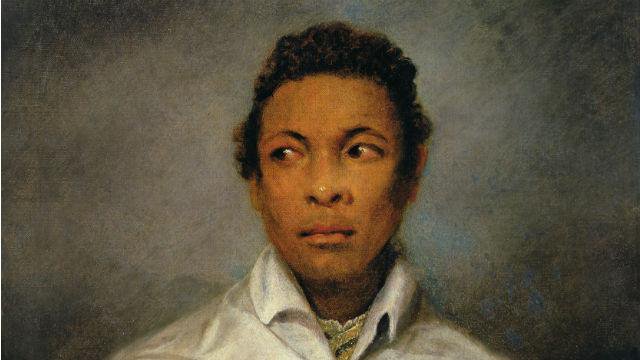Shakespeare in Ten Acts: the legacy of Shakespearean tradition
An exhibition exploring seminal performances of Shakespeare
Friday 15 April - Tuesday 6 September 2016
PACCAR Gallery, The British Library
Review by Natalia Fantetti

Othello by James Northcote, courtesy of Manchester Art Gallery Bridgeman Images
The premise of the British Library’s ‘Shakespeare in Ten Acts’ exhibition had given me high hopes: ten stand-out performances to track the Bard’s literary afterlife across the four hundred years since his death. But how exactly do you pinpoint a mere ten performances from over 36 plays which have been revived time and again, and still manage to chart this incredible journey from original productions to the modern day? It is certainly a difficult undertaking but one that the curators behind the exhibition manage with aplomb. Instead of rigidly staying within the confines of these ten, carefully selected performances, they are used to springboard into related issues and ideas. For example, the room dedicated to the first black actor to play Othello in Britain (Ira Aldridge, at Covent Garden in 1835) also looks at the controversial old tradition of ‘blacking-up’ and the general representation of black performers in Shakespearean plays. The visitor gets both the particular and the general; the personal and the public.
The multitude of literary documents and display items range from the incredulous (the forged letter from Shakespeare to his wife by William Henry Ireland is a favourite) to the bizarre (e.g. the human skull used in a performance as Hamlet by Sarah Bernhardt), and there were plenty of surprises even for even the most avid Shakespeare fan. Modern media elements such as videoed interviews, animations and film posters were woven in effortlessly with more traditional exhibits and documents to bring the strands from the old and the new together. There was a good, imaginative use of the entire exhibition space, with some exhibits such as Ariel’s costume from a recent production of 'The Tempest', being hung from the ceiling instead of being encased in a glass cabinet.
As for the ‘Ten Acts’ element, I felt it could have been made a little more clear within the exhibition as to which performances they are relating to, although this information is readily available in the accompanying gallery guide. I particularly liked the rooms based on the first time a woman acted in a Shakespeare play which was in 1660 and I also enjoyed the Globe Theatre’s production of ‘Twelfth Night’ where original practices, such as an all-male cast, were used. However, what is apparent about all of the ‘Acts’ is that whichever one particularly stands out for you, they all make you think. This is what I think the exhibition’s main strength is: getting you to consider Shakespeare’s relevance and usage both in the past and present from a variety of angles.
The message of the exhibition for me can perhaps be summed up by looking at one of the last items in the exhibition, Sir Kenneth’s Branagh’s script book for ‘Hamlet’. What is interesting about it is it has been signed and handed down by previous famous Hamlets. In one item you can see a snapshot of the legacy of the Shakespearean tradition and the need for re-interpretation. So, we must contemplate the history of these performances whilst also seeing how we can add our own ‘Act’ for the next generation.

